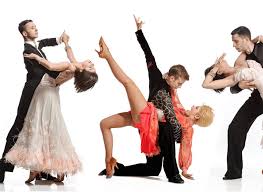Is Ballroom Dancing Sexist?
« Leading » (usually done by the man) and « Following » (usually done by the woman) is an issue specific to ballroom dancing. Actually, in an effort to be more politically correct, leading is nowadays often called « indicating ». However, that does not change the general pattern.
Yes, I know, for one it has historical reasons: In Old Europe, where the origins of ballet and ballroom dancing are, the roles of males and females were sharply defined along gender differences (the reasons being partially realistic, partially chauvinistic).
So what, we could say. Who cares what the historical roots are. Don’t we have female presidents, astronauts, and combat soldiers nowadays? So why can’t we get it right on the dance floor?
Well, being a women’s rights advocate and a ballroom dancer at the same time, I can see that it is not that simple. There is a good reason for the lead-and follow pattern – or whatever you call it.
The reason is that the ultimate goal in partner dancing is to be synchronized to the point where two become one. Then the couple is « in flight » as a single unit which is a gorgeous sight. That cannot be achieved by two people doing the same thing, but only by having clearly defined roles as natural opposites – and sticking to them (and yes, that can be two women or two men, but they have to be in the feminine/masculine roles).
Any woman who has anticipated a move before the man indicated it, stepped forward with the wrong foot, or was forced to drag a man across the dance floor because he did not know how to lead, knows how uncomfortable if not disastrous that can be.
Nevertheless, there can be an emotional reaction to all of this. For example, I do feel resentment when I see overly macho dances performed, where the woman can end up lying decoratively on the floor clinging to the man’s ankle, while he looks, all pumped up, down on her. (She might be the CFO of a Fortune 500 company, and he is probably a complete jerk who can’t hold a minimal wage job… o.k., I am getting carried away here.)
On the other hand, women do sometimes lead in ballroom dancing, for example when they go forward, and the man goes backwards, or when they do their own, intricate movements with the man serving as a « pole » for leverage (mostly done in Latin American Style). Also, dancing backwards is by no means less demanding since the woman has to move with the same amount of power. So yes, Ginger Rogers did everything Fred Astaire did, only backwards and in high heels.
The beauty and elegance of ballroom dancing might strike us as old-fashioned, but the effect is mesmerizing.
























